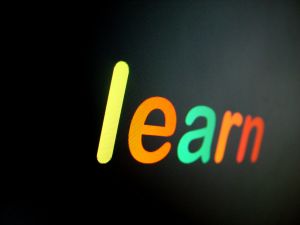Clinton Wingrove and Catherine Mercer Bing have some controversial views about the usefulness of elearning. Read on and see what you think.
Globalisation and elearning certainly rate as two of HR's hot topics. Cognitive science tells us that learning is a process of moving information from short-term to long-term memory and extensive assessment analysis research has proven that active learning does that best (according to a recent article in Harvard Magazine called 'Twilight of the Lecture', active or interactive learning triples student gains in retained knowledge). Educational research also shows that the most effective learning is a social activity.
This article addresses the questions: Why do we still focus on training rather than learning? Why has elearning become so popular in today's corporations? Is elearning really doing the job it was intended to? Does elearning work globally and can it develop global leaders?
Trends in L&D methodology
Over the last decade, there have been major movements in the delivery of Learning and Development:
- We can't afford to send them to training
The economic downturn has driven organisations to seek short-term cost reductions, and to seek to drive up delivery of short-term results. These pressures have made 'time away from the job' (eg in the classroom) especially in large time chunks (a day or more vs. one hour at a time) unacceptable. The concept of an employee being 'our most valuable asset' (which once drove the argument for investing in training) has now turned against us and so we must keep them focused on the job.
- Elearning is cheaper, better, faster
The advent of packaged elearning and wider access to the internet came at a convenient time – now organisations could argue that they were using the latest techniques to achieve more efficient and cost-effective learning and development whilst minimising their time off the job. The increase in use of 'micro-learning' (eg one hour or less training sessions) slipped in around the same time.
The more sophisticated elearning modules provide more rigorous participation tracking and testing. However, elearning typically only tests knowledge acquisition not true learning; the ability to utilise the knowledge on the job (cf. Kirkpatrick model).
 "The dependence on elearning and use of the internet as an alternative to inherent knowledge and experience has facilitated a shift in priority from skill acquisition to knowledge access...[but] reading about riding a bicycle is no alternative to physically learning how to ride one." - Clinton Wingrove
"The dependence on elearning and use of the internet as an alternative to inherent knowledge and experience has facilitated a shift in priority from skill acquisition to knowledge access...[but] reading about riding a bicycle is no alternative to physically learning how to ride one." - Clinton WingroveThere is little evidence to show that elearning and internet searching are effective in achieving non-repetitive skill development for all bar the most repetitive and scripted tasks such as equipment operation, form filling, etc.
- Focus on knowledge acquisition
The dependence on elearning and use of the internet as an alternative to inherent knowledge and experience has facilitated a shift in priority from skill acquisition to knowledge access. The younger generations are much more experienced at using technology to find information. But information is not all that is needed for skill building. Reading about riding a bicycle is no alternative to physically learning how to ride one.
- Self-directed learning
Extensive internet access; economies associated with elearning; increasing demands of managers; and other generational characteristics have led to far greater self-directed learning. The challenge is that, when self-directed learning becomes the norm, learning and development trends towards 'learning what we like' rather than ‘learning what we need’. This shows itself in the learning topics selected; where the majority of time is spent; what is practiced and what is not. As many of us know, what we want is often not the same as what we need. We only need to look at the sale of weight loss supplements compared to the usage of treadmills.
Other issues with dependence on elearning
In addition to the above issues, elearning in any form (including reliance on searching the internet to solve problems – pull-learning) means:
- Much of the programme content is designed as ‘on-screen page turners’ – little more than an ebook
- It focuses on individual learning and often completely eliminates any interaction with others (which in itself is an important business skill). More contemporary technology does support interactions (with avatars or videos and even with other participants around the world. However, anecdotal evidence suggests that these are still far less effective than 'the real thing'
- Elearning is unable able to take advantage of the 'teachable moment', flex to the participants learning styles or flex to their cultural preferences
- Technology usage creates a barrier for older generations who often need to learn technology before they can get to the content
It is increasingly clear that, whilst elearning (including pull-learning on the internet) can be extremely cost-effective for specific purposes, it still falls seriously short as a medium for interpersonal skills development and many other forms of skill development that depend on interactions, creativity, or any form of individualised approach.
Part two of this feature will be published later this month.
Catherine Mercer Bing is CEO of ITAP International and Clinton Wingrove is EVP and principal consultant at Pilat HR Solutions









